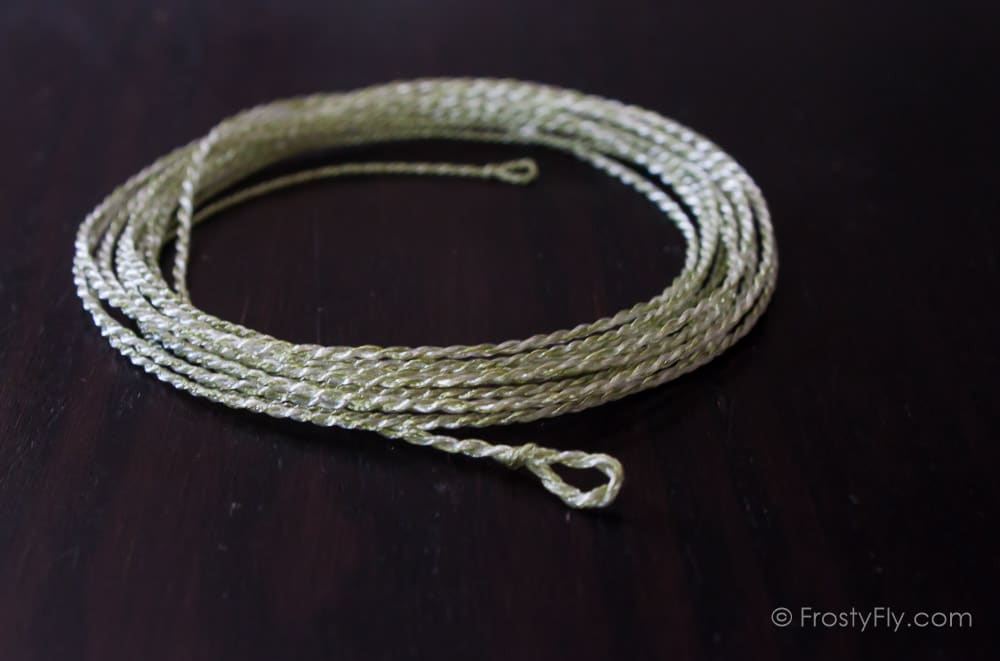Narf,
Modern fly lines are self-lubricating/self-coating. However they do need to be cleaned when they get dirty, especially if you fish in a stream with a lot of silt. However, a dirty line does not seem to be your problem since the sinking happened right away.
It may be that the coating on your fly line is not a modern self lubricating coating and it does need treatment like flav suggests. So buy a fly line treatment and do not use a treatment for automobiles like Armorall.
Sexyloops Rio Products
“How best to treat Rio Lines? What do you personally use (silicone spray? Armorall?)
"
Never, ever use Armorall on a PVC fly line. It breaks down the bond and results in very poor durability. The line will dry out and harden with constant use of Armorall. We recommend a mild soapy water with a flannel to clean the line, then if you want to re-lubricate it, apply a 100% silicone, though very lightly. All PVC fly lines use silicone as a lubricant, so it is best to use the base ingredient to prolong the line's life."
Flyline - Page 2 - Fly Fishing - Nova Scotia Fishing
"Armor All
From Scientific Anglers:
SA would advise against using Armor All. We have found that it will accelerate the aging of the fly lines and the lines may crack prematurely. Our fly lines need very little or no dressing - only cleaning. If you fish a lot - 2 seasons would be a good life expectancy for a line before cracking, which would be lessened with the use of product such as Armor All being applied. Also there are many factors that can accelerate cracking. 1. Time of use, 2. exposure to sun/heat 3. care of lines 4. applying non recommended chemicals to the line (Insect repellent, sunscreen, Mucilen, Armor All, etc.), 5. water content 6. lack of proper cleaning.
We are attaching a document regarding line care.
Hope this helps - thanks for choosing Scientific Anglers
To optimize the performance of your Scientific Anglers fly lines, Here are Our recommendations:
1. Line Cleaning: The best way to clean the line is to use a SA cleaning pad. These do the best job of cleaning your lines, and it is the quickest and easiest method. Mild hand soap and water on a cloth work well also. Don’t use detergents or harsh soaps, some of the important lubricants may be removed from the line’s surface.
Clean your line if you see that it is getting dirty, or if you notice that it doesn’t float or shoot as well as used to. New lines will require less periodic cleaning.
2. Maximum Performance – For maximum performance and line life, keep your lines clean using the above methods. Should you desire a further, temporary performance boost, consider dressing your line with SA line dressing. Any line will shoot and float better after dressing, although the effects are temporary as the dressing will wear off with use, and the dressing tends to attract dirt and algae. Our new coatings benefit less from dressing than other coatings as they are slicker to start with.
3. Dressings: Use only a silicone based dressing. We recommend Scientific Anglers Dressing. Avoid solvent based dressings like Mucilin which can actually damage fly lines.
4. Protection: Avoid as much as possible, excessive exposure to heat and UV light when you store your lines. Do not leave them for long periods of time in a hot car, this can be very damaging.
5. Things to Avoid: Avoid line contact with any solvent based chemicals as well as items such as: insect repellent with DEET and sunscreens.
6. Storage – It is not necessary to remove lines from your reels for off-season storage. They should be clean and dry, and should be stored where they will not be exposed to heat, light, or any chemicals. If you have lines that you plan to store for extended periods, the refrigerator or even freezer is best."
How to Clean a Fly Line - Part 1 on Vimeo




